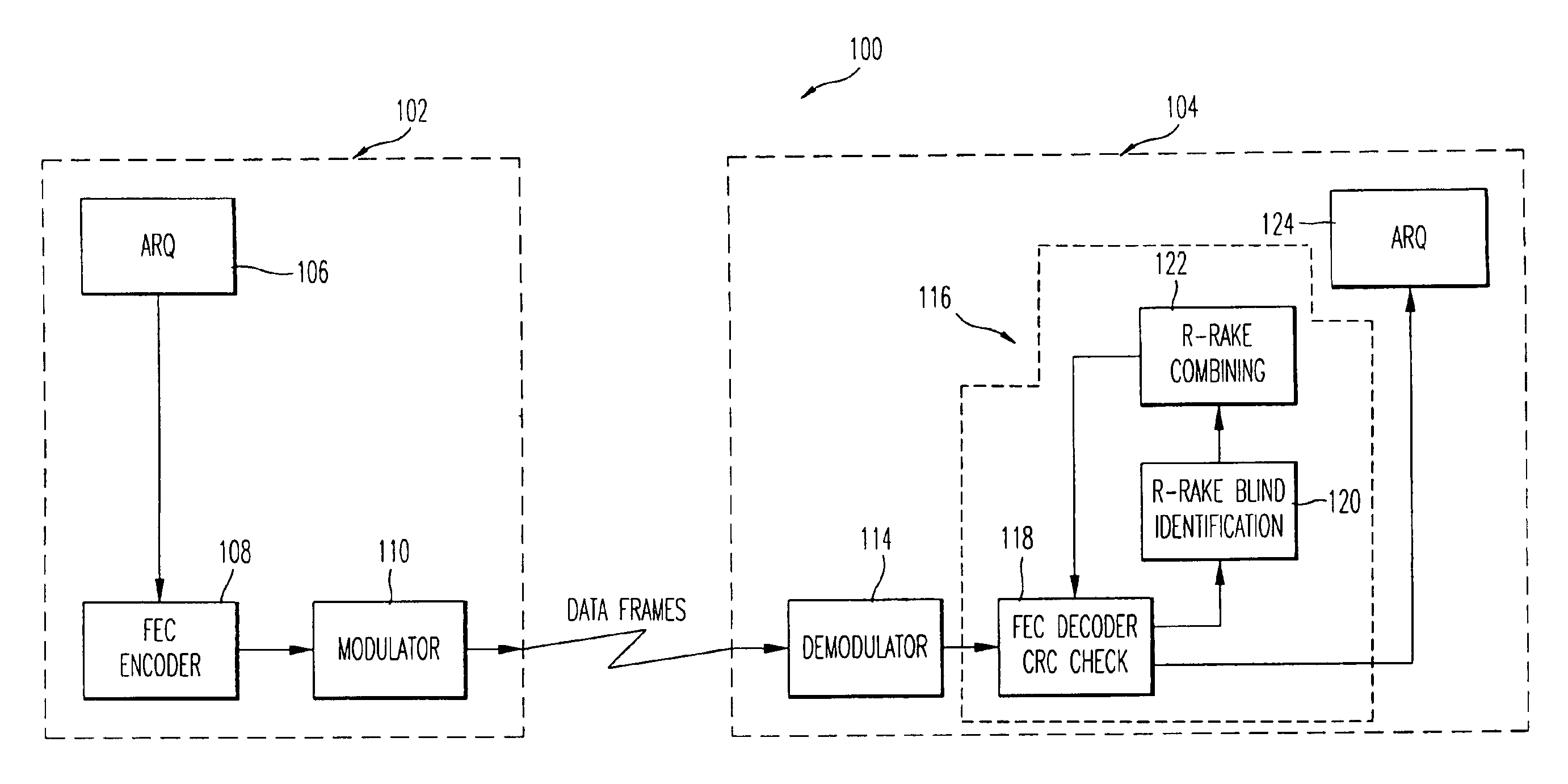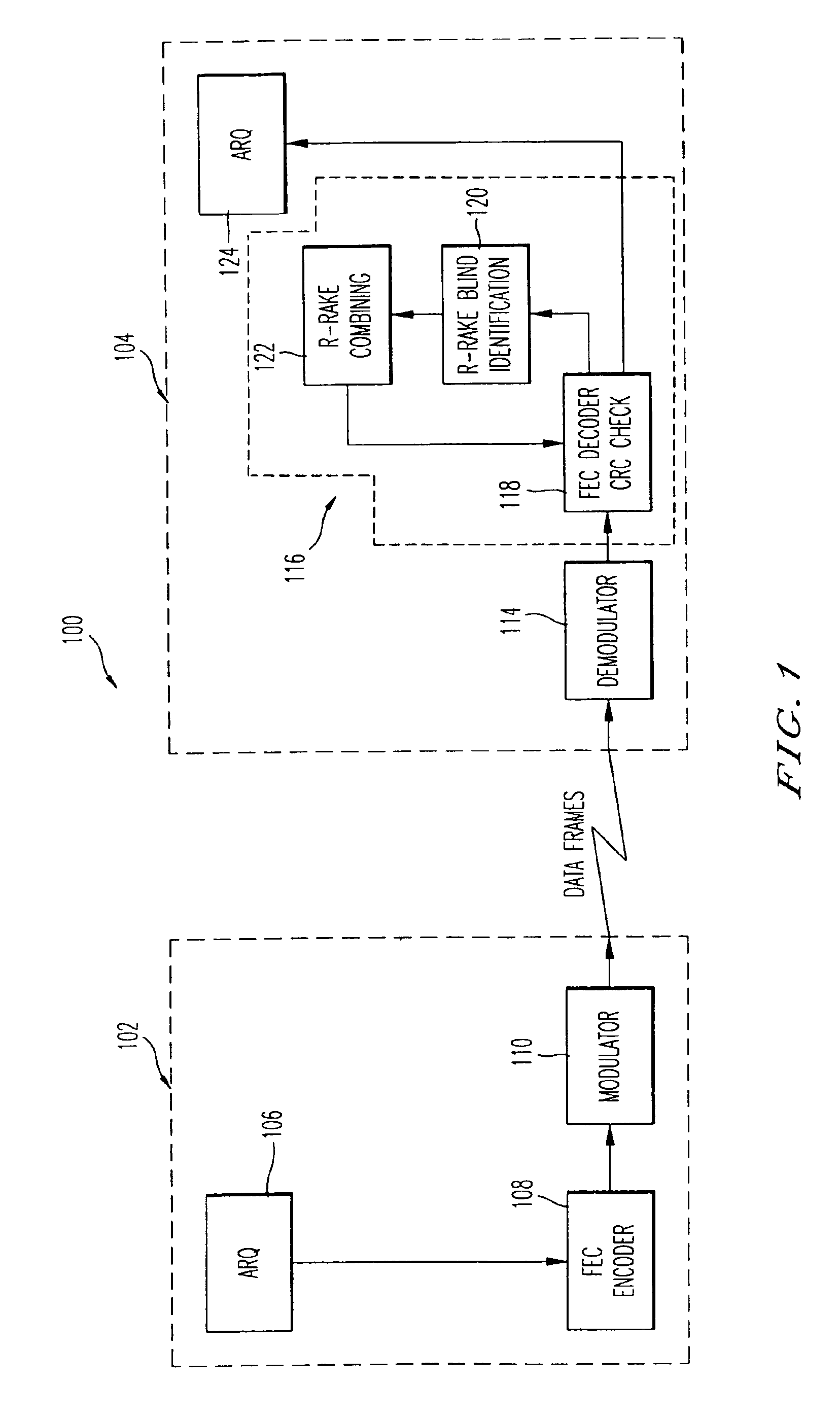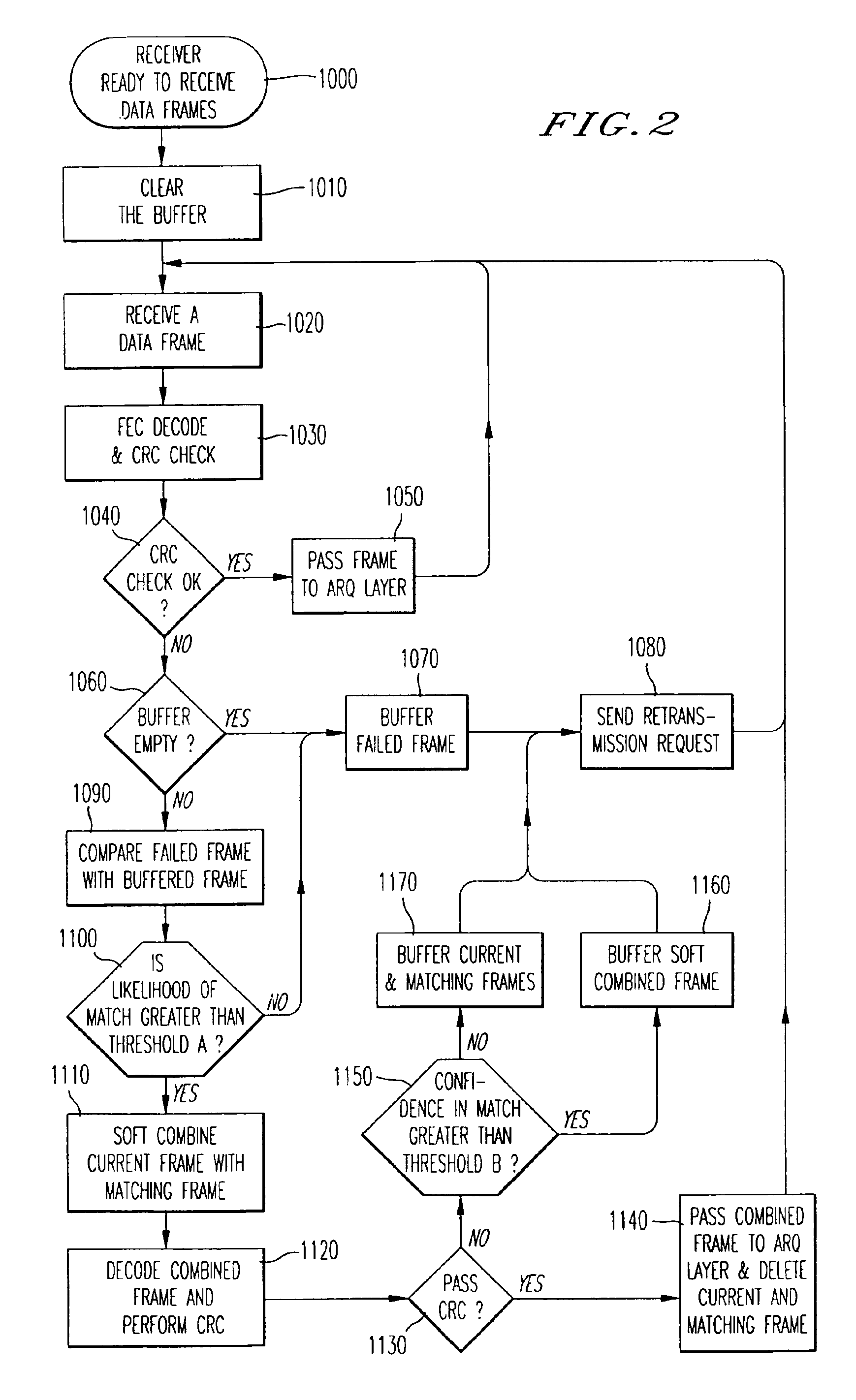System and method for transmitting data in frame format using an R-Rake retransmission technique with blind identification of data frames
a retransmission technique and data frame technology, applied in data switching networks, instruments, frequency-division multiplexes, etc., can solve the problems of increasing network traffic, incurring further delay and additional network traffic, and deemed conventional r-rake techniques are often deemed impractical, so as to increase the gain at the receiver, the effect of effective and efficient retransmission of data frames
- Summary
- Abstract
- Description
- Claims
- Application Information
AI Technical Summary
Benefits of technology
Problems solved by technology
Method used
Image
Examples
Embodiment Construction
[0022]FIG. 1 is a conceptual block diagram of a communications system 100, such as a wireless terrestrial or satellite-based communications system, or a wire-line communications system, employing a frame retransmission technique according to an embodiment of the present invention. The system 100 includes at least one transmitter 102 which transmits data in data frame format, and at least one receiver 104 which receives the transmitted data frames. As can be appreciated by one skilled in the art, the system 100 can includes any number of transmitters 102 and receivers 104.
[0023]As illustrated, the transmitter includes an ARQ layer 106 which provides data in data frame format to a forward error correction (FEC) encoder 108 that encodes the data frames as can be appreciated by one skilled in the art. The FEC encoder provides the encoded data frames to a modulator 110 that modulates the data frames and transmits the modulated data frames over a physical channel. The encoded and modulate...
PUM
 Login to View More
Login to View More Abstract
Description
Claims
Application Information
 Login to View More
Login to View More - R&D
- Intellectual Property
- Life Sciences
- Materials
- Tech Scout
- Unparalleled Data Quality
- Higher Quality Content
- 60% Fewer Hallucinations
Browse by: Latest US Patents, China's latest patents, Technical Efficacy Thesaurus, Application Domain, Technology Topic, Popular Technical Reports.
© 2025 PatSnap. All rights reserved.Legal|Privacy policy|Modern Slavery Act Transparency Statement|Sitemap|About US| Contact US: help@patsnap.com



